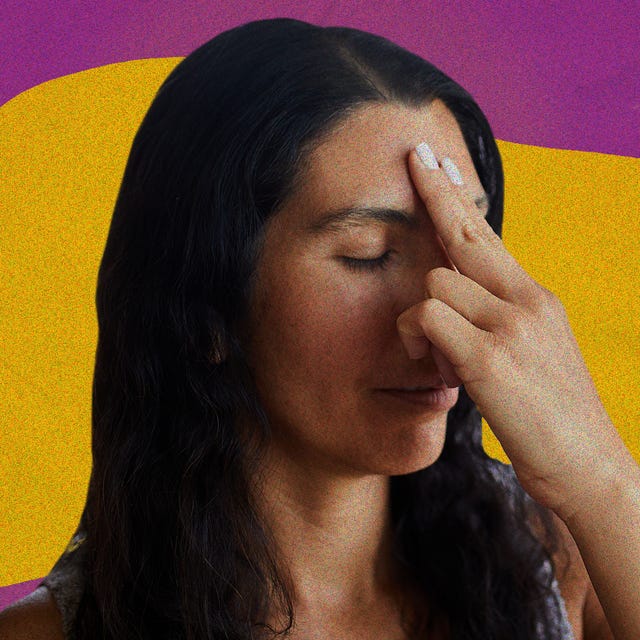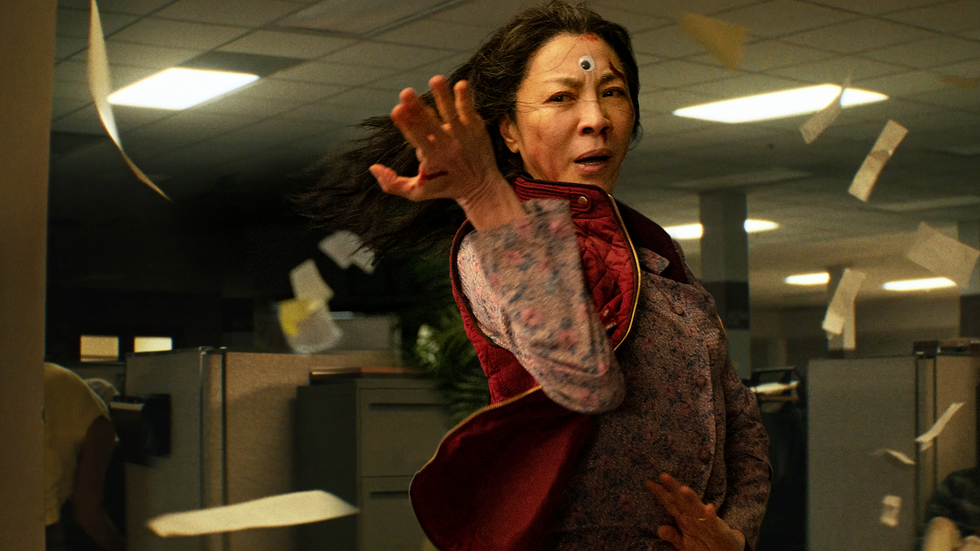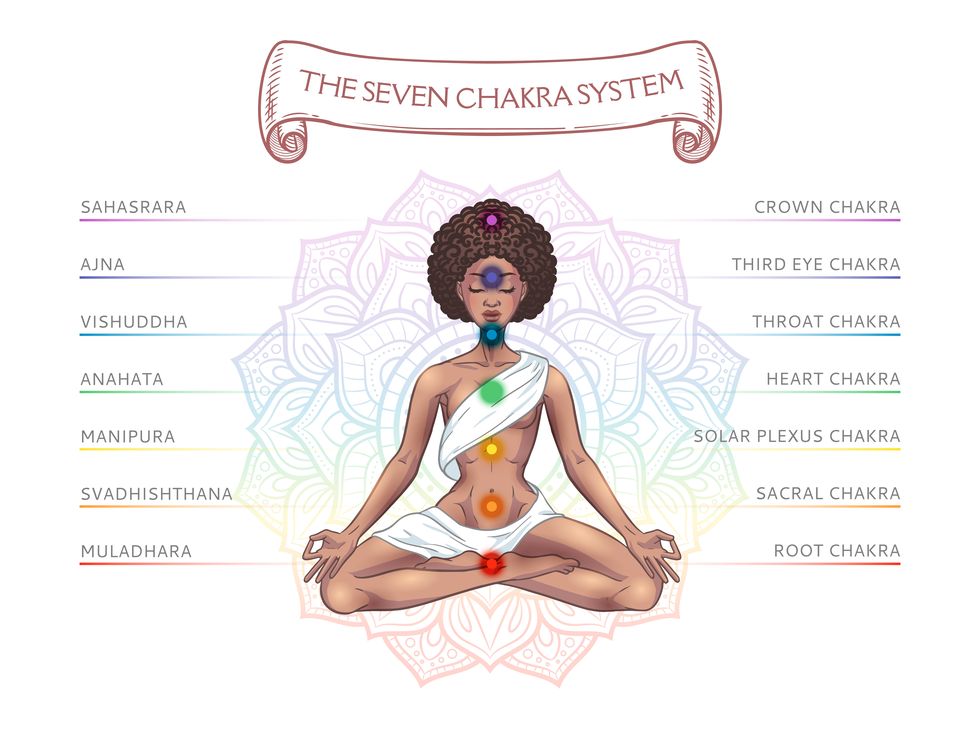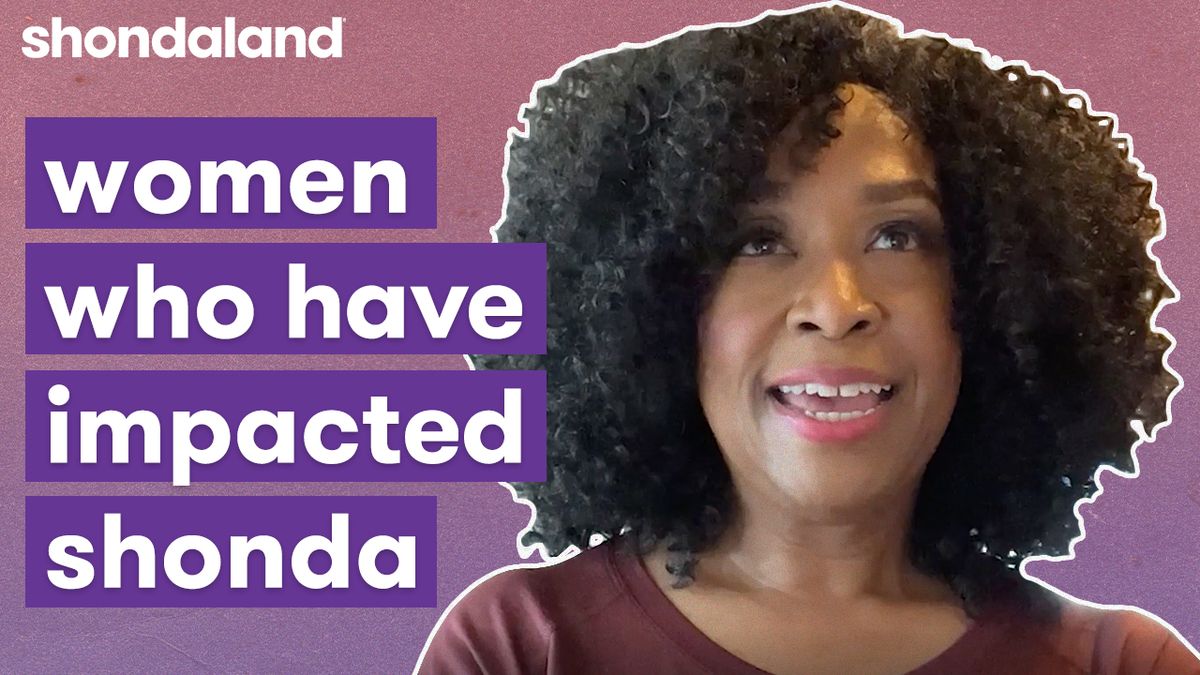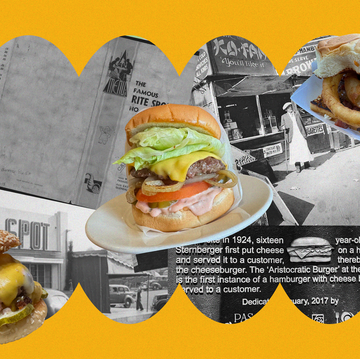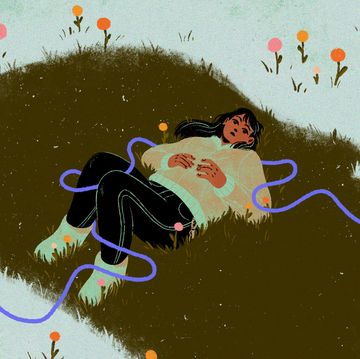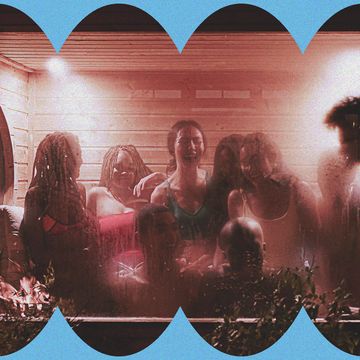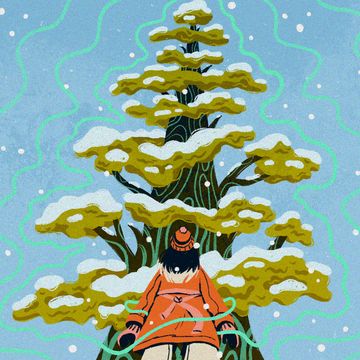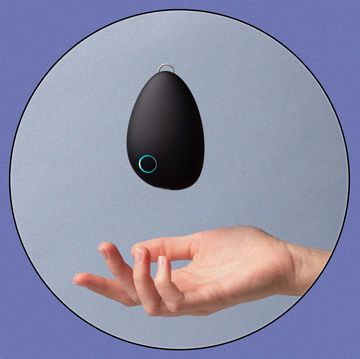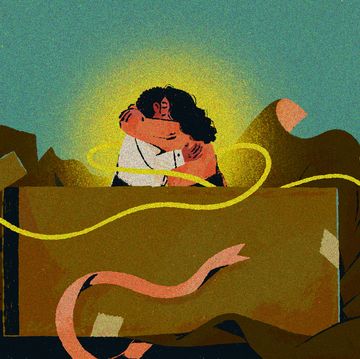With prominent appearances in the recent hit films Doctor Strange in the Multiverse of Madness and Everything Everywhere All at Once, the concept of the third eye is seemingly having a moment. In the real world, however, the symbol of the brow chakra has been an important energy center for thousands of years.
What is the third eye?
The third eye is found in many beliefs, including Hinduism, Buddhism, and Taoism. According to religious texts originating in ancient India, the third eye, or the ajna chakra, is located on the brow at the tip of your thumb when the knuckle is placed on the bridge of the nose. The third eye’s beej mantra, or seed mantra, is om, which represents unification and nondiscrimination.
“The symbol of the third eye is the lotus with two petals,” explains yoga guru and spirituality expert Sindhu Sajeev. “At this level, the duality ends, and we see only one, universal, all-encompassing divine energy.” She says that the accompanying greeting of namaste, with the head bowed and hands placed together close to the heart, means that we view divinity in everyone without prejudice. “It actually symbolizes that I am bowing to the divine,” she adds, “that is inside of you.”
Shiva, the multi-armed, blue-skinned Hindu deity, embodies the ajna chakra as he is associated with transformation. Based on some texts, the two petals in third eye imagery also represent Shiva and Shakti, the goddess who personifies creation and dissolution.
What is a chakra?
Ajna is the sixth of seven chakras, a series of energy centers located across the body. It’s believed that when the chakras are unblocked or aligned, energy flows freely across the mind, body, and soul — similar to when Michelle Yeoh’s character achieves enlightenment with a googly eye smack dab on her forehead in Everything Everywhere All at Once. Here are each of the seven primary chakras and what they represent:
- Sahasrara: Also called the crown chakra, this energy center helps access higher consciousness. It is the center of spirituality and enlightenment.
- Ajna: The third eye denotes intuition and the ability to see things beyond what you see on the surface. Focusing on this chakra assists in visualizing and understanding the world beyond desires and distractions.
- Vishuddha: At the base of the throat, this energy center controls communication, decision-making, and self-expression. At the mental level, an aligned throat chakra can help you communicate clearly and project yourself with authenticity.
- Anahata: Located at the position of the heart, this energy center controls love, compassion, and affection. When it is aligned, it’s believed to lead to a feeling of connectedness with the world.
- Manipura: This chakra is located below the rib cage and is associated with fire and transformation. At the physical level, it controls the digestive system. At the mental and emotional level, it manifests self-confidence.
- Svadhisthana: Located three fingers below the navel, this chakra controls pleasure, sensuality, and creative energy. When this chakra is balanced, there is a sense of harmony and enjoyment of life.
- Muladhara: This is the root chakra that sits at the base of the spine. It is the foundation associated with a sense of security, safety, and survival. Its focus is on satisfying basic needs like food, water, and shelter. At a mental and emotional level, it helps us feel grounded and secure.
What does the third eye do?
“For someone whose ajna chakra is activated, their intuitive ability is very strong,” explains Sajeev, adding that people have said they can sense when death is near when their third eye is buzzing. For instance, the Kashi Labh Mukti Bhawan in India shelters those who anticipate death and wish for their final days in Kashi, the ancient name for Varanasi, where taking your last breath is believed to lead to moksha, or salvation.
Besides intuition, the ajna chakra helps people understand the difference between temporary and permanent happiness. The third eye is meant to guide us to treat everyone without discrimination. “Everyone is the same in the eyes of those whose ajna chakra is activated,” Sajeev says, noting that being able to activate this energy center in our daily lives is a notable feat.
How do you activate your third eye?
Meditation, positive affirmations, seed mantra chanting, and yoga techniques like shirshasana (headstand), balasana (child’s pose), and garudasana (eagle pose) are said to help align the ajna chakra. However, be wary of the growing number of instructors who claim to be able to activate your third eye. Sajeev advises that awakening the ajna is something that no one else can do for you. “A guru can only show you the path,” Sajeev says. “You must do the work and walk the path.”
Sajeev notes that once your third eye is activated, the materialistic world won’t affect your mood. Neutrality, heightened awareness, and self-mastery will lead to strong intuition. “Feelings of gratitude, being responsive instead of reactive, and being helpful will come naturally to those whose ajna chakra is fully activated,” she says, stressing the requirement to harmonize your thoughts.
While the blockbuster Doctor Strange in the Multiverse of Madness is pure fantasy, a recurring question asked in the film by Rachel McAdams’ character has real-world resonance for all interested in spiritual alignment: Are you happy? Ultimately, immense power alone — whether in the Marvel Cinematic Universe or our own — won't lead to pure joy. In his next appearance, perhaps Doctor Strange’s newly acquired third eye will direct him to happiness in its truest form. But if he is truly awakened, maybe it won’t matter anymore?
Barkha Shah is a Karnataka, India-based writer who has contributed to The Hindu, Children’s World, Reader’s Digest, Oddball, and Punch.
Get Shondaland directly in your inbox: SUBSCRIBE TODAY
